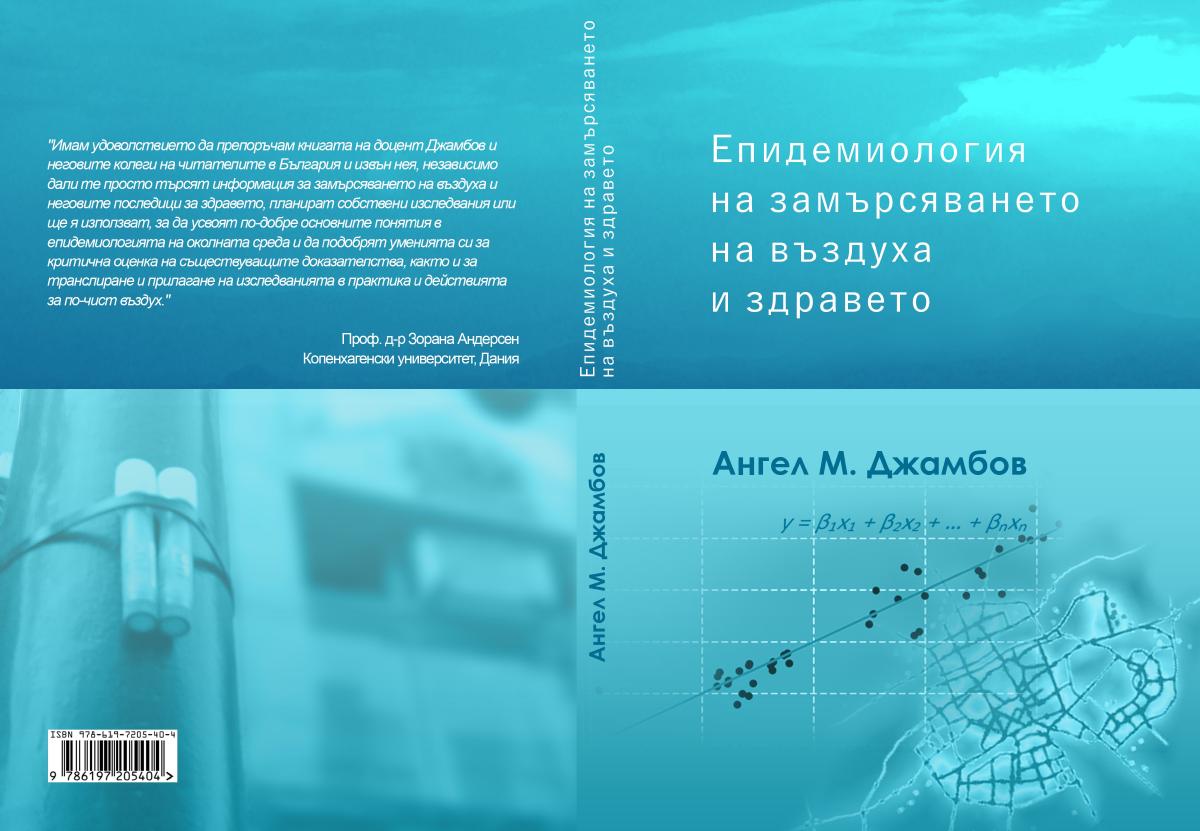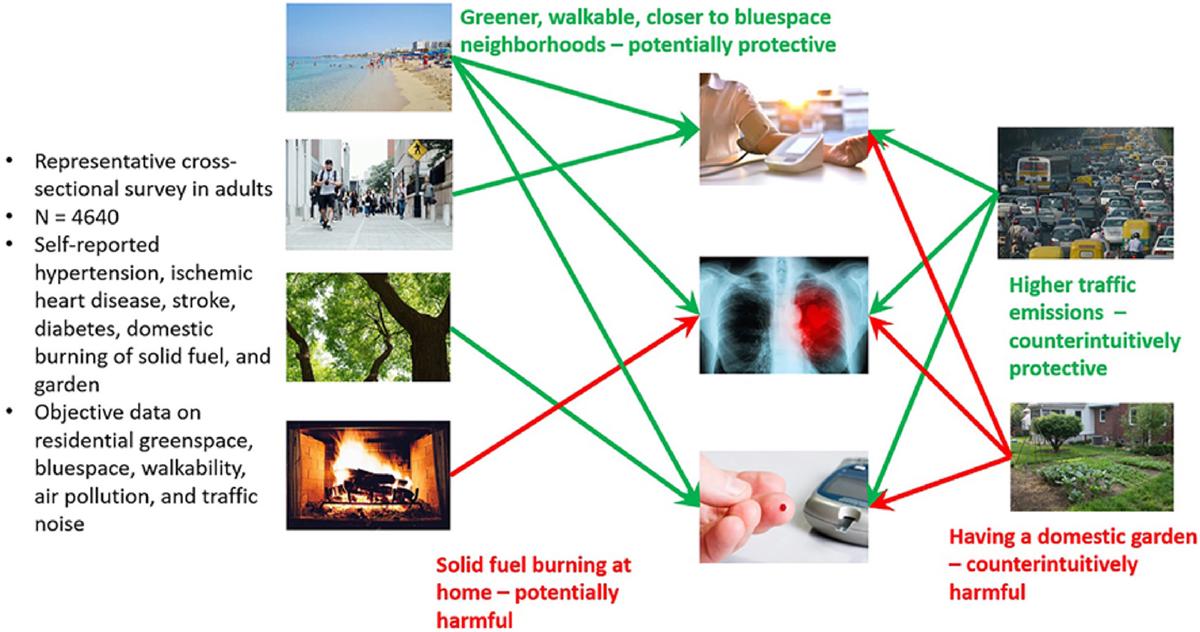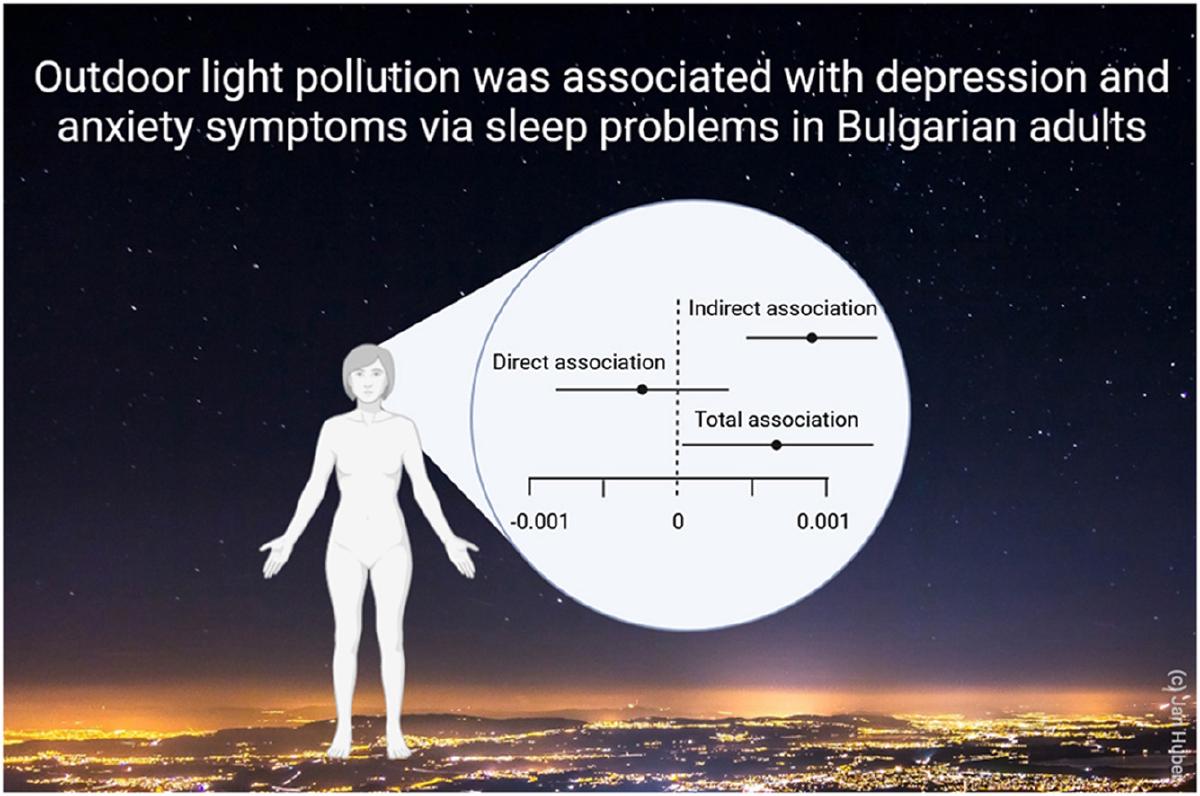Publications
Epidemiology of air pollution and health
DownloadIn this book, we outline air pollution as a priority issue of scientific and public interest by reviewing the scientific data accumulated to date, conceptualizing and analyzing empirical data, and interpreting it in order to assess the strengths and weaknesses of the proposed methodology and make recommendations for the future development of this scientific field in the country.
The book begins by placing the issue under consideration in the context of what is currently known, then goes through the various steps of preparing and analyzing primary data, and concludes by positioning the research conducted in the city of Plovdiv, and current research activity in the country as a whole, within the broader context of accumulated knowledge and good practices in this field. It is conceptually divided into three parts.
The first part examines the distribution, main sources, and health effects of major atmospheric pollutants. The algorithm and methodology for assessing their impact on health are presented, supported by current data.
The second part illustrates the application of the principles of environmental epidemiology in studying the relationship between air pollution in the city of Plovdiv and health outcomes related to chronic diagnosed diseases, self-assessment of health, and mental well-being. It also looks at the link between air pollution and public annoyance about it, which is rarely seen as a health indicator in Bulgaria. The steps for developing a statistical model to determine the spatial distribution of nitrogen dioxide pollution in Plovdiv are examined in detail, as well as the subsequent linking of these data with data from a quantitative sociological survey conducted among the city’s population.
The third part contains recommendations for future research work in the field of air pollution epidemiology in Bulgaria, with an emphasis on integrating geospatial analyses into the methodological apparatus of researchers working on this topic in the country.
The book is intended for specialists in the fields of public health and social sciences, as well as natural and biological sciences. It will probably be a useful source of information for other specialists and citizens interested in the topic.

Does nature make us less lonely? Analysis in Bulgaria’s five largest cities
DownloadLoneliness is prevalent and increases the risk of disease and premature death. The prevalence of chronic loneliness in Bulgaria is among the highest in the EU. This study explored whether greater exposure to nature is associated with less loneliness in adults living in the five biggest cities of Bulgaria. We used data of 3604 adults from a cross-sectional population-based survey conducted in 2023 in Sofia, Plovdiv, Varna, Burgas, and Ruse. The participants have reported on how lonely they felt during the last two weeks. The “nature-likeness” of their home environment was objectively assessed by degree of vegetation, tree cover, percentage of urban green spaces like parks, and distance to the nearest water body, all obtained by raw or processed satellite images. In addition, presence of home garden, perceived quality of nearby green spaces and water bodies, “green” and “blue” window views, and time spent in nature was collected from the participants. We observed that living in both too green and too little green home environments or in environments with too much tree cover was associated with increased loneliness. Residing in areas with more urban green space, higher green space quality, and green space window view, and spending more time in green and blue space were associated with lower loneliness. Our findings underscore the importance of extending and improving urban green and blue spaces in Bulgarian cities.
Exposure-response relationships between road traffic, railway, and aircraft noise and annoyance in Bulgarian cities
DownloadThis study developed exposure-response relationships between road, rail, and air traffic noise and high noise annoyance (HNA) and calculated the HNA disease burden in five Bulgarian cities. To that end, we frist based our analyses on a sample of 4640 adults from the five largest cities in Bulgaria, and measured their annoyance form different traffic noise sources with a validated questionnaire. We linked this data to the European Noise Directive maps for these cities. The estimated burden among people exposed to ≥40 dB amounted to over 40 million USD or 200 million EUR, depending on the analytic strategy. We could only derive a plausible exposure-response relationship for railway noise annoyance, so until better exposure-response relationships are derived for the Bulgarian population, we recommend using the WHO curves for road traffic and aircraft noise annoyance.
Physical urban environment and cardiometabolic diseases in the five largest Bulgarian cities
DownloadThis study looked at how the environment where people live affects the prevalence of heart and metabolism-related diseases in the five biggest cities in Bulgaria. We used a sample of 4,640 adults from Sofia, Plovdiv, Varna, Burgas, and Ruse. The people in the study told us if they had any of the following: high blood pressure, ischemic heart disease, stroke, or diabetes. They also told us about their homes such as if they had a garden and if they burned wood or coal in their homes. We linked residential addresses to greenspace, bluespace, walkability, air pollution, and traffic noise exposure. Bluespace within 300 meters of people’s homes was linked to lower prevalence of hypertension and diabetes. The more walkable and tree-covered a neighborhood was, the lower the chances of someone having high blood pressure or diabetes, respectively. We found a link between using solid fuels for cooking and ischemic heart disease. There was also some evidence that aircraft noise was linked to both stroke and heart disease. We concluded that people living in urban neighborhoods that were more walkable, closer to bluespace, and greener had a lower prevalence of cardiometabolic diseases, while solid fuel burning was associated with a higher odds of cardiovascular diseases. The surprising links we found with some of these factors could be due to unaccounted for characteristics of the urban fabric. This study is one of the first to look at a region in Southeastern Europe that hasn’t been studied much. The results could help inform public discussions and provide evidence to support the use of urban design that promotes cardiometabolic health.

Sleep problems mediate the association between outdoor nighttime light and symptoms of depression and anxiety: A cross-sectional, multi-city study in Bulgaria
DownloadThis study analyzed how outdoor nighttime light pollution is related to mental health among adults. Artificial light due to billboards, streetlamps, etc., is more and more becoming a health problem in cities. Previous research suggests that nighttime light might negatively affect mental health by disrupting natural sleep patterns. We aimed to examine if sleep problems indeed play a role in connecting nighttime light to mental health issues. Through some statistical models, we showed that nighttime light was related to people’s mental health conditions and their sleep problems. While the direct effect of nighttime light on mental health was small, the overall relation to mental health problems – including its impact through sleep – was still positive. The findings suggest that outdoor nighttime light could negatively affect mental health, largely by disrupting sleep. As outdoor nighttime light continues to rise, we advocate for policies aimed at reducing it to improve public health.

Sociodemographic inequalities in residential nighttime light pollution in urban Bulgaria: An environmental justice analysis
DownloadThis study looks at how outdoor nighttime light is distributed among different groups of people living in the five largest Bulgarian cities. As cities continue to grow and get brighter at night due to artificial light, it is important to understand who is most affected by this environmental threat, especially since previous research suggests that nighttime light is related to human health. We used questionnaire data from more than 4,200 adults and measured the outdoor nighttime light at their homes using remote sensing. We applied statistical models to see if outdoor nighttime light was linked to factors like income, education, employment status, age, gender, and ethnicity. We found that people with higher education tended to live in areas with more nighttime light, while those with moderate incomes or who were unemployed experienced lower nighttime light. Surprisingly, the elderly and ethnic minorities in Bulgaria did not seem to face higher light exposure. Overall, our findings suggest that outdoor nighttime light exposure may represent an environmental justice issue in Bulgaria, but it’s not always the most disadvantaged groups that are most affected.
Traffic noise assessment in urban Bulgaria using explainable machine learning
DownloadTraffic noise is becoming a serious problem, not only because it harms human health but also because it hinders the environmental sustainability of cities. Most studies that analyze how traffic noise is related to human health depend on detailed noise data, but such information is often hard to get, especially in Eastern Europe. We address this lack of noise data by using machine learning techniques to estimate long-term road traffic noise levels obtained from 232 measurement locations across the five largest cities in Bulgaria. Our results show that noise levels vary considerably across urban areas and that, for example, the distance to major roads and railroads is a critical factor in traffic noise levels. We also found that showed that 95% of the population in the five cities experienced harmful noise levels. Our noise maps are freely available to the public and can be reused in other studies and for urban policymaking.
